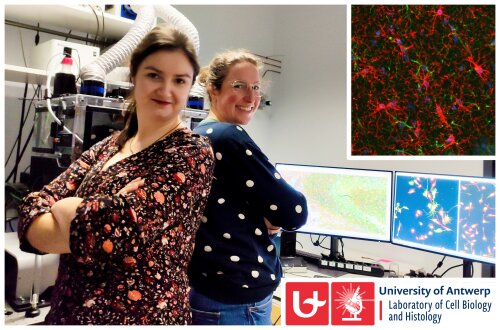Not familiar with the topic? Check out our ABC's of microglia research below for a glossary of the underlined words!
Microglia are the major immune cells of the brain. They continuously inspect the local environment for unwanted material such as pathogens and cell debris and remove it to maintain brain homeostasis. Unfortunately, changes in microglial activation state may also contribute to the aging process and pathological conditions such as neurodegeneration.

To better understand the role of microglial heterogeneity and its molecular drivers, we are investigating it in mouse models of accelerated aging and tauopathy using a combination of whole brain microscopy and single-cell RNA sequencing. This analysis has allowed us to identify specific subpopulations that are uniquely associated with either condition (Gruel et al., in prep).
Considering the significant inter-species-differences in microglial mark-up we are also developing human(ized) in vitro models by grafting human microglia derived from pluripotent cells into mouse brain tissue or human cerebral organoids.
We firmly believe that improving the characterization of microglia and gaining a deeper understanding of their modulation could greatly aid in the development of effective therapies for age-related brain diseases.

Written by Dr. Johanna Van den Daele & Dr. Roxane Gruel
Laboratory of Cell Biology and Histology

The ABC's of microglia research
Homeostasis: when the system is in a rest state; in a state where it should be.
Microglia heterogeneity: not all microglia are similar - depending on the environment, they can change their profile.
Tauopathy: a group of diseases characterized by the deposition of abnormal tau protein in the brain, such as in Alzheimer's disease.
RNA: a polymeric molecule essential for turning the instructions in your DNA into functional proteins in your cells.
Single-cell RNA sequencing: a technique where the RNA is determined in individual cells, in contrast to regular RNA determination which is done in a population of cells.
Inter-species-differences: the differences seen between different species, such as human and mouse. This can be on system level, but also on RNA or protein expression.
Pluripotent stem cells: cells that can keep growing indefinitely and can form all the cells of the body.
Organoids: mini-organs, created in a dish, such as mini-brains.